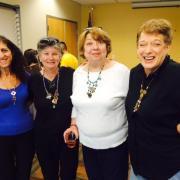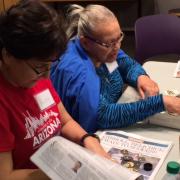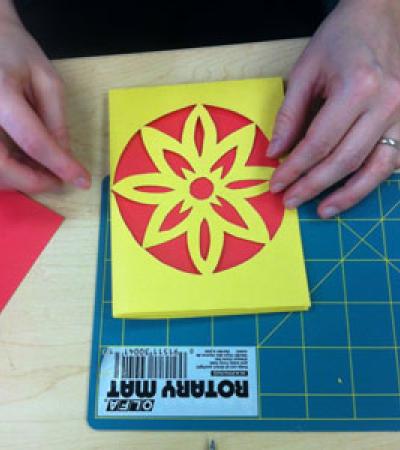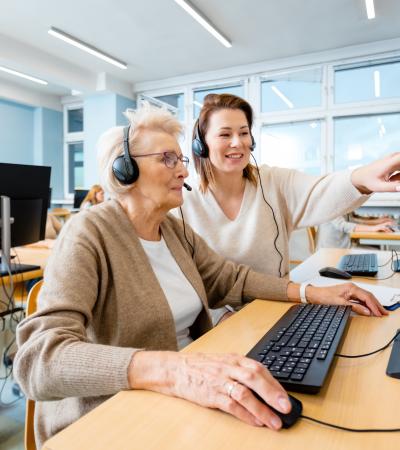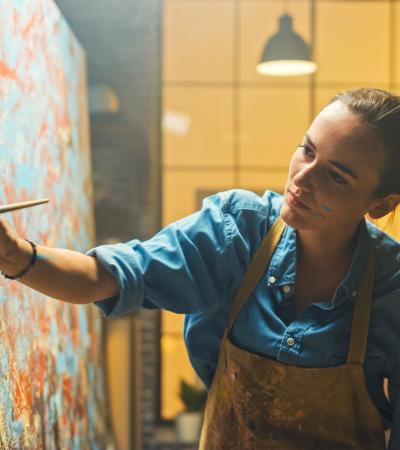Editor’s note: This Program Model is part of a series highlighting the work of the Lifetime Arts Affiliates, a cohort of 20 libraries that has been working with Lifetime Arts Inc. to launch professionally conducted arts education for older adults. For more information, check out Lifetime Arts' Creative Aging Toolkit for Public Libraries, a free online resource for librarians that provides information about creative aging research, best practices, and practical advice for planning and implementing creative aging programs.
***
The Phoenix Public Library (PPL) hosted creative aging programs sponsored by Lifetime Arts to get seniors into the library for artistic endeavors. We wanted to spark their imaginations for the arts and culture using teaching artists to facilitate hands-on programs.
PPL used a teaching artist who specialized in watercolor painting instruction and another in “found” or reclaimed objects (junk) to create jewelry pieces. The sessions were hosted at Yucca, Ironwood, Desert Broom and Palo Verde libraries to capture the broadest audience from our communities. The programs ran nine weeks, with eight instructional sessions and a final session devoted to showcasing participants' pieces in an art show. At PPL, this series was funded through an Institute of Museum and Library Services (IMLS) grant, to be reimbursed after the programs were completed.
Advanced Planning
I started planning six months in advance with surveys, interviews and venue coordination. As a first step, I would suggest surveying your older adult community members to discover areas of interest such as photography, painting, mask-making, theater, chorale group or creative writing. (View PPL's partcipant survey, and other material referenced in this Program Model, under Attachments as right.)
Next, interview and hire your teaching artist. This is the most important aspect of the project, and the right “fit” for the teaching artist is necessary. Once you've found a teaching artist, lay out expectations in a project plan for the nine weeks and the prospect of continuing the program in the future.
Finally, budget how much you'll spend on supplies. You may purchase the supplies for the artist or include this cost in your letter of agreement with the artist. Then walk through the program area and determine space constraints, water sources, number of tables and chairs and special clean-up needs (such as drying space for the artwork). At Yucca, we didn't have a water source to clean brushes and materials, so we used a large water cooler and a plastic tub for a portable sink.
Marketing
The next step is to communicate and market your program. Phoenix is large, so the classes filled up quickly with the 12-student limit. We had a three-person standby list, which helped alleviate disappointed folks. We also communicated the program to other city partners and senior centers.
You should also document your sessions with photos! I took photos of the opening sessions at each location, during the fourth or fifth class, and finally at all of the art shows. These photos will encourage your friends or funders to continue the program while highlighting the outcomes for your participants and the community.
Budgeting
Our total budget was $10,000 for four classes, but PPL managed to host five programs (two at Yucca) during the grant cycle. The four classes ended up costing $8,800, and we were able to offer the fifth class (found jewelry items) for just the cost of the artist's time. The watercolor instruction class was more expensive due to the nature of the supplies, but the artist’s fee was the same as the jewelry teaching artist. (View the watercolor class supplies budget and teaching artist invoice under Attachments at right.)
Day-of-event Activity
No staff members were present during the sessions, but they did set up the room for the event. The teaching artist facilitated the class during the entire series. All supplies were pre-purchased, and the artists brought the materials to each class, set up and cleaned up.
Program Execution
A total of 60 adults participated in the five programs. At the final event, we paid artists and formulated a sustainability plan to continue. We also surveyed participants and received very positive feedback! PPL Friends have continued the program at two locations after the grant cycle ended due to the overwhelming positive response, success of the program and needs for senior-specific programming.
Advice
The most important part is hiring the right teaching artist for the program. Make sure the artist has experience teaching older adults or children and understands the goals and outcomes of the program concept.
This program can build bridges to other artists and program opportunities for seniors. Give it a try; this population is often underserved, and it will elevate the presence of the library in your community.
Supporting Materials
- Feedback (Coming Soon!)
- Programming Librarian Facebook Group

